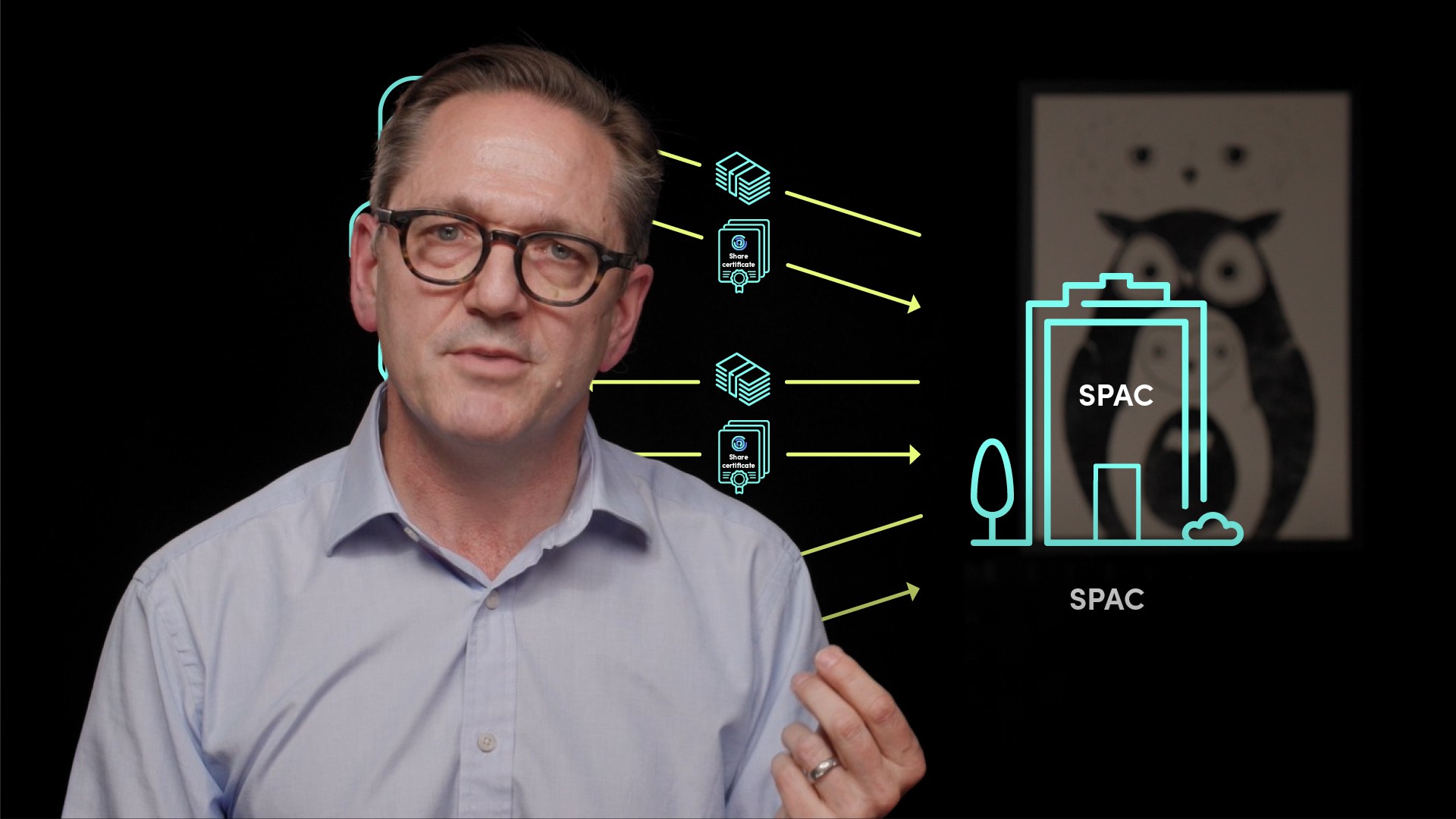
What is the Difference between a SPAC and an IPO?

Rupert Walford
25 years: Capital markets
In this video, Rupert explains the differences between the SPAC merger route to a public listing and a traditional IPO and analyses the pros and cons - and whether the SPAC merger route does in fact provide a better alternative.
In this video, Rupert explains the differences between the SPAC merger route to a public listing and a traditional IPO and analyses the pros and cons - and whether the SPAC merger route does in fact provide a better alternative.
Subscribe to watch
Access this and all of the content on our platform by signing up for a 7-day free trial.

What is the Difference between a SPAC and an IPO?
9 mins 22 secs
Key learning objectives:
Identify the differences between a traditional IPO and a SPAC merger
Explain each of these factors in detail
Overview:
In this video Rupert looks at the key differences between coming to the public markets via a merger with a SPAC and via a traditional IPO. Some of which include speed, execution risk and valuations.
Subscribe to watch
Access this and all of the content on our platform by signing up for a 7-day free trial.
How do they differ in speed?
- Becoming a listed company by merging with a SPAC is a simpler and faster process - taking typically 3 to 5 months - as opposed to a period of anything up to a year for a traditional IPO
- The terms of the merger - including the valuation - are privately negotiated between the SPAC, its key shareholders, the target company and the investors in the PIPE - as opposed to through what is referred to as a “price discovery exercise” involving lengthy marketing and a public market book-build
- For the SPAC merger a relatively small number of investors are required to be supportive to ensure the success of the deal - as opposed to a large number of investors and investor meetings required for a traditional IPO
- There are also generally less onerous requirements for the disclosure documents with a SPAC merger
Which method involves less Execution Risk?
There can be a lot less execution risk following the SPAC merger route to a public listing. The SPAC has already IPOed and raised funds before discussions even commence with the target company. And provided investors are supportive of the merger, the terms of which have, as mentioned, been negotiated privately in advance, once the merger has been announced there is a relatively low risk of failure. For a traditional IPO on the other hand, success is very dependent on the success of the public book build, which is conducted right at the end of the process over several days and is therefore subject to considerable market risk - and can fail at the last moment through no fault of the company.
What are the Fees and other costs surrounding both a SPAC merger & IPO?
The fees and other costs associated with a SPAC merger can make it a more expensive route to the public markets than a traditional IPO. The bulk of the costs associated with a traditional IPO are the banks underwriting fees, which in the US are usually 7 per cent of the amount raised in the IPO. A SPAC will only pay a 2 per cent underwriting fee on the SPAC IPO proceeds raised and 3.5 per cent on the money raised in the PIPE - so the cost of this capital is lower than the cost of the equity raised in a traditional IPO.
What are some other fees and costs for a SPAC merger that need to be taken into account?
- Investment bank fees
- Costs due to share dilution
- Costs due to redemption of shares
Which is better in providing a better valuation for the company?
In the US, because the de-SPAC is regarded as a merger rather than an IPO, management projections are allowed to be provided to investors. Because of this - and because of the increased competition created by the currently large number of SPACs looking for assets, it can be argued that a better valuation for the company can be achieved than would be the case via a traditional IPO. The price discovery exercise associated with a traditional IPO has been tried and tested over many decades and arguably provides a valuation that is more reliable over the longer term.
How do the methods compare via their access to the public markets and amount of funding?
Because of the current market appetite for investing in companies coming to market via a SPAC merger, and because of the ability to market using management projections, a private company may be able to successfully come to market earlier in its lifecycle - and may be able to raise a greater amount of equity funding - than would be the case following a traditional IPO. On the other hand, the attractiveness of the SPAC structure for investors interested in trading opportunities such as hedge funds can lead to a share register which is less reliable than would be the case for a public listing via a traditional IPO.
Why might the SPAC merger route be attractive to a private company?
- Faster process
- Simpler process
- Potentially better valuation
- Earlier public listing
- Ability to raise a greater amount of capital
Subscribe to watch
Access this and all of the content on our platform by signing up for a 7-day free trial.

Rupert Walford
There are no available Videos from "Rupert Walford"



























